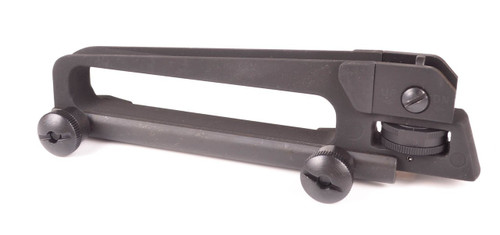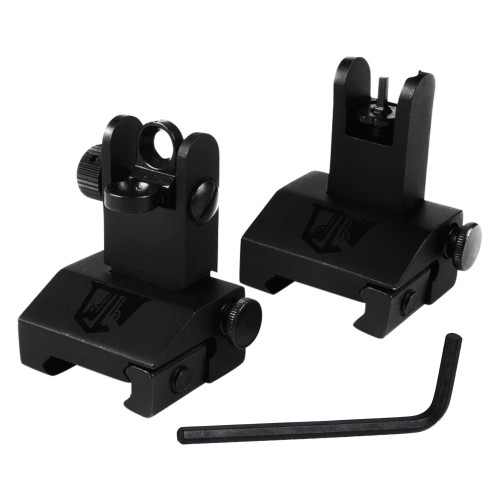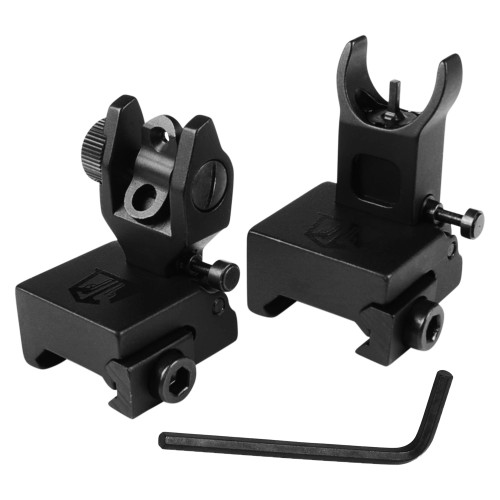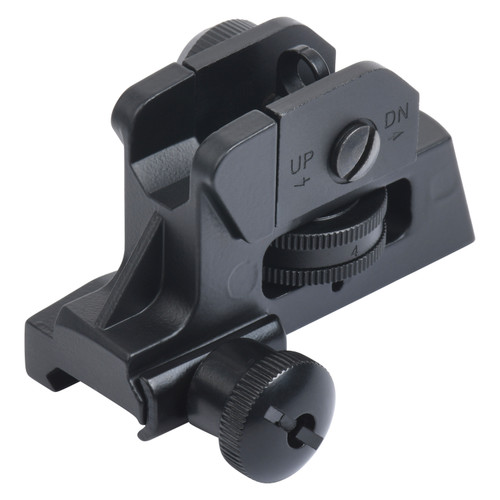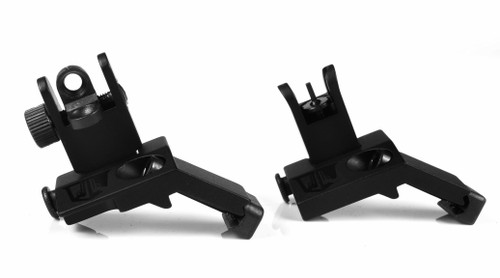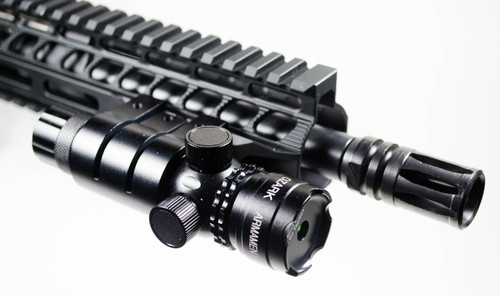Posted by Matt Rice on Mar 25th 2022
A Guide On How To Respond To An Active Shooter Situation
SOURCES
Be Prepared: An Essential Guide on How to Respond to an Active Shooter Scenario
Disaster can strike at any time, and you will never be ready when an eventuality occurs. However, your safety largely depends on how well you have prepared to counter the disasters and mitigate life and property loss.
Active shooting incidents continue to be an eye-opener to many. Why? Because the active shooter may be the last person or people you least expect. More so, the shooter may decide to unleash terror attacks in a place that you least expect.
Places prone to an active shooter may include churches, shopping malls, and crowded places. In the recent past, residential areas, schools, and workplaces have become target places by active shooters.
So, who is an active shooter?
According to the FBI shooter resources, an active shooter is an individual or a group of people involved in an active shooting of people in a highly-populated area with the aim of killing. Their attack weapons, in most cases, are rifles. They shoot either at people in a confined space or any gatherings that will result in more fatalities. In most cases, the attackers don't choose their target, but instead, they shoot randomly.
It is common knowledge that law enforcement officers will come to your rescue in such a situation. But that is not always the case because officers take about 15 to 30 minutes before they arrive at the shooting site.
But you cannot wait for that long because your life is in danger. You need to think fast with a plan on how to save yourself and those with you.
In the following guide, we will show you the steps that will help you prepare emotionally and physically to deal with an active shooter.
Steps on How To Handle An Active Shooter
When dealing with an active shooter situation, the steps that you should always think about are four.
-
Running/evacuating from the area under attack.
-
Hiding from the shooter
-
Attacking the shooter
-
Waiting for the law enforcement officers to save the situation.
These are the main safety precautions you have to remember whenever an active shooter strikes your location.
Let us look at each step.
Step 1: Run Or Evacuate The Premises

Escaping from the active shooter or evacuating the premises is what will always be on people's minds when an active shooter strikes. It is a good move. However, your life is in danger here, and you have to plan and understand the options available to you. Therefore do the following.
Plan in your mind to escape and identify the easy escape route for you.
Most premises have emergency escape doors. It is a structural requirement for them to be two. To identify the one close to you and determine how easy it will be to reach that door. That means you have to understand your environment well then make a move.
-
Do not carry your belongings - When running from the shooter, forget about your valuable belongings and run for your life. Nothing is more precious than your life. You will always have them back when the situation normalizes.
-
Try and avoid moving wounded people - It is a noble move to save a dear one or a friend during a shoot-out. That is a good gesture; however, it is not a good idea for you if it is a wounded person. You will be putting your life and that of the injured person in danger. Leave that for the rescue team when they arrive.
-
Help others to escape the premises - If you find an opportunity to help others escape from the shooter, then make a wise choice, and help them escape with you if possible.
-
Do not allow others to enter the premises where the shooter is located - As you will be running from the shooting site, you might see others trying to enter the premises. Please don't allow them, because you have to save others whenever possible.
-
Do not wait for others to escape - Taking an exit route may be the only courageous move that others might not agree to accept. Do not wait for their decision not to follow you. Take that bold move, evacuate from the premises, and go to a safe place.
-
Call 9111, and you may be required to give information about the location, the number and description of the assailants, the weapons they have, and the number of victims.
Step 2: Hide From The Shooter

While running from the active shooter may be an option to take, you might find yourself not able to reach the exit door. Or it might not even be possible to escape. In such a scenario, the only option is to hide from the shooter.
When you decide to hide, do the following:
-
Ensure your hiding place is away from the shooter's view - Avoid windows and doors. Again, if the windows and doors have blinds, you can close the blinds.
-
Protect yourself from the shots fired by the shooter - Hide behind a barrier like a cabinet, below a table, or anything that will shield you from the shots.
-
Do not cage yourself - You might get into a room to hide, and you decide to lock yourself in a closet or a wall cabinet. Any place that restricts your movement option is not safe for you. Always allow space for you to move when an escape window presents itself.
-
Lock the door if you are in a room and barricade it - If you have access to a room, ensure you lock the door firmly. Moreover, block the door by placing heavy objects behind it. Use heavy furniture or a heavy metal bar if there is one to bar the shooter from accessing the room.
-
Turn off any source of noise that might attract the shooter - Remain calm and keep your hiding place as silent as possible at all times. In the same way, maintain silence by switching your phone to silent mode. Switch off the radio and computer. Any noise can bring the shooter close to your hiding point and spell doom for you. Also, ensure you switch off the lights in the room.
-
Have an action plan to escape if the shooter has access to your hideout - Think of how you can escape if the shooter can spot your hideout. If you are more than one person in the hiding place, spread out so that it becomes easier for you to take action.
-
When in the hiding place, call for help - You should call for help when possible. So, when in hiding, make a call to the emergency response team by dialing 911. Remember, you have to maintain silence, not attract the shooter your way.
How do you do that?
Dial 911 and leave the lines open for the receiver on the other end to listen to what is happening. The dispatcher will then send help to your location.
Step 3: Attack Or Fight The Shooter

If the circumstances cannot allow escaping or hiding, the last resort is to confront the assailant. It is not the best idea because the shooter has a gun, but it might work. Do not go for the weapon. Instead, try to disrupt the shooter.
You are only advised to take this option if you have no other choice and think your life is in imminent danger. When attacking or fighting the shooter, do the following,
-
Do not attack the shooter alone - Working as a team will help overpower the attacker quickly. Don't try to be a hero to save the day because you do not stand a chance alone. Work as a team and have a plan to defend, disrupt or fight the attacker.
-
Be aggressive and follow your decision to fight the attacker to the end - Once you and others have decided to attack the shooter, do not relent or give up. Be combatant and know that your life depends on overpowering the assailant.
-
Use any weapons around you to attack - To fight the shooter is not easy. Remember, an active shooter is using a firearm. Use make-shift weapons available around the place. Take advantage of chairs, tables, books, shoes, and fire extinguisher cylinders to attack the assailant.
It is worth mentioning that fighting the shooter should come as a last option. You can only do that if the shooter is close to you and that your escaping chance is minimal. Only attack if your life is in imminent danger.
After the incident, the law enforcement team will arrive at the site to assist and get people out of the building. Put down any object and raise your hands and keep them visible. Do not scream, run towards, or grab the law enforcers. Ensure you follow all the officers’ directions and do not make any sudden movements.
If you were hiding in a safe place, don't expect immediate help because the officers will go after the shooter first. You have to remain in the secure area until the situation is brought under control. Remain in the safe area and not leave unless the officers have approved.
How Do You Act When the Rescue Team And Law Enforcement Team Arrive?
The arrival of the rescue and the enforcement team is always a relief to you as a victim. Therefore,
-
Remain calm and try not to panic - By the time the law enforcers arrive, you may have been traumatized and panicking. Try to remain as calm as possible. And follow the instructions of the rescuers.
-
Ensure you are visible to the officers - Hiding when the officers arrive can be dangerous. Know that officers do not know how the shooter looks, and it is easy for the shooter to act as a victim of the shooting. Therefore, stay with others and avoid holding anything in your hands. Raise your hands and spread your fingers for the officers to see you.
-
Avoid making any unnecessary movements - Many people will want to run to the officers, shouting and screaming, even trying to hold and hide behind their backs for safety. Unfortunately, it is not the best move. If you do that, you will be putting the officers’ lives and yours at risk.
-
Do not stop and seek help from the officers - When officers arrive, their main target is to subdue the enemy, not to help. Therefore, follow the officer's direction and run to a safe area outside the premises. In most cases, the officers will rely on the victims' information, and if you know who the attackers are, how many they are, and their location, don't hesitate to tell the officers. But, follow the correct protocol to relay that information to them.
-
Help the officer remove the wounded from the premises - During an active shooting, two teams are responsible for taking control of the situation. These are law enforcers and the rescue team. The rescue team comes after the law enforcers have controlled the situation. Their work is to take part in rescuing the wounded. During the rescue, unharmed persons will have to help carry the injured. If called upon, please support the team in rescuing other victims.
Once outside the premises, proceed to a safe area set aside for the victims. Remain there and stay calm until the situation returns to normal. If asked for your personal information, don't hesitate to give it to the officers. Please do not leave until you are told to do so by the officers.
You can help account for the missing persons in the safe area if there are any. Help your team leader count the people present and give out any personal information that officers might need.
Shooting has become rampant in workplaces, schools, churches, shopping malls, and other places that people congregate. Being prepared for situations helps in saving many people’s lives.
If you are an employer, investing in a few things for your staff and your premises goes a long way. It brings down the tension that might build and cause more harm. If you are an individual, then it is your responsibility to save your life and others' lives.
How Do You Prepare For A possible Active Shooter Situation?
-
Ensure there are exit doors and exit routes in the building
Having easy and straightforward access to exit doors will reduce fatalities in an active shooting situation. The exit door must allow people to go through quickly and avoid barriers along the exit routes. More so, ensure the doors are correctly labeled, and an exit arrow points at the door. If possible, have more than two doors.
-
Have what would act as weapons placed strategically at different points in the premise
That sounds weird. But in times of a shoot-out, they are invaluable and help hinder the enemy on the premises. However, check these weapons at all times and take control.
-
Ensure all the doors are lockable and determine what would make a good barricade in case of any eventuality.
-
Look out for warning signs among people around you.
It is not easy to tell what a potential shooter looks like. However, you can guess and identify if one is in trouble and might end up a possible shooter going by the previous occurrences.
-
Look out for the following funny characters.
-
Social or emotional warning. If suddenly one withdraws from others, too much sadness, emotional outburst, and excessive fatigue. Then handle that person as first as possible.
-
A person's behavior takes about Turn. One gets angry, becomes a bully, intimidations and altercations with others, and many more will tell you something might not be correct.
-
-
Invest in drills and training.
They say practice makes perfect, yet you will never be perfect when one is on a suicide mission to injure and kill others. However, frequent drills and active mock shooter situations will help understand the actual shooter. It will also help to master the exit routes and other protective measures.
-
Invest in a precise and elaborate communication system. The movement of information from one point to the other is a preventive tool.
Call to Action
Disaster preparedness makes it easier to attack and handle situations more calmly. The focus should be on mitigating losses arising from such a disaster.
Active shooting is one such disaster that continues to soar, with many incidents reported every day. The sad part is, you cannot tell when it will take place because each active shooter is different. You can have safety guidelines for you and your team to counter the situation before it escalates.
The shooters act fast and decisively. Therefore, you must be ready. Be prepared mentally and psychologically to deal with an active shooter. Above all, your life is more precious to you, so follow these guidelines and stay safe.
Note that understanding gunfire sounds may not be straightforward, and therefore you have to assume any pop sound as gunfire. The assailant can also use any type of weapon and not only guns. They can use explosives, knives, or any other blunt object, and they can be as deadly as a gun. This guide’s suggested actions will apply to any type of violent attack.
References
DHS. (2008, October). Active Shooter How to Respond. Department of Homeland Security.
https://www.dhs.gov/xlibrary/assets/active_shoote...
Eastern Michigan University. (2016, April). Active Shooter Incident Awareness and Response.
https://www.emich.edu/publicsafety/emo/documents/...
Federal Bureau of Investigations. (2016, July 16). Responding to an Active Shooter Crisis Situation. Federal Bureau of Investigation.
https://www.fbi.gov/about/partnerships/office-of-...
Federal Bureau of Investigations. (2020, October 7). Active Shooter Resources.
https://www.fbi.gov/about/partnerships/office-of-...
Federal Bureau of Investigations (FBI). (2020, April 29). Active Shooter Incidents in the United States in 2019. Federal Bureau of Investigation.
https://www.fbi.gov/file-repository/active-shoote...
Federal Emergency Management Institute. (2015, December 28). FEMA - Emergency Management Institute (EMI) Course | IS-907: Active Shooter:Â What You Can Do.
https://training.fema.gov/is/courseoverview.aspx?...
Healthcare and Public Health (HPH). (n.d.). Active Shooter Planning and Response In a Healthcare Setting. The Healthcare and Public Health (HPH). Retrieved March 20, 2021, from
https://www.alicetraining.com/wp-content/uploads/...
Healthcare and Public Health (HPH) Sector Coordinating Council (SCC). (2017, January 24). Active Shooter Planning and Response.
https://www.jointcommission.org/-/media/tjc/docum...
NSO. (n.d.). What to do if there’s an active shooter at your healthcare facility. Retrieved March 22, 2021, from
https://www.nso.com/Learning/Artifacts/Articles/a...
S. U. N. Y. B. S. C. (n.d.). Active Shooter Response and Procedures | University Police | SUNY Buffalo State College. University Police. Retrieved March 22, 2021, from
https://police.buffalostate.edu/active-shooter-re...
The University of Texas at Austin. (n.d.). Active Shooter Response Guide. UT Austin. Retrieved March 21, 2021, from
https://preparedness.utexas.edu/safety/active-sho...
Vassar College. (n.d.). How to Respond to an Active Shooter - Safety and Security - Vassar College. Safety and Security at Vassar College. Retrieved March 20, 2021, from
https://security.vassar.edu/safety/how-to-respond...
Article Written By Matt Rice, Owner Operator of OZARK ARMAMENT
Matt Rice is the founder and owner operator of OZARK ARMAMENT. He started the company in 2016 with a vision to bring quality, affordable firearm accessories to every person who wants to improve their shooting experience. With his dedication to providing old-school customer service and his attention to detail in the development and manufacturing of gear, Matt has helped OZARK ARMAMENT become a respected name in the firearm accessories industry.






